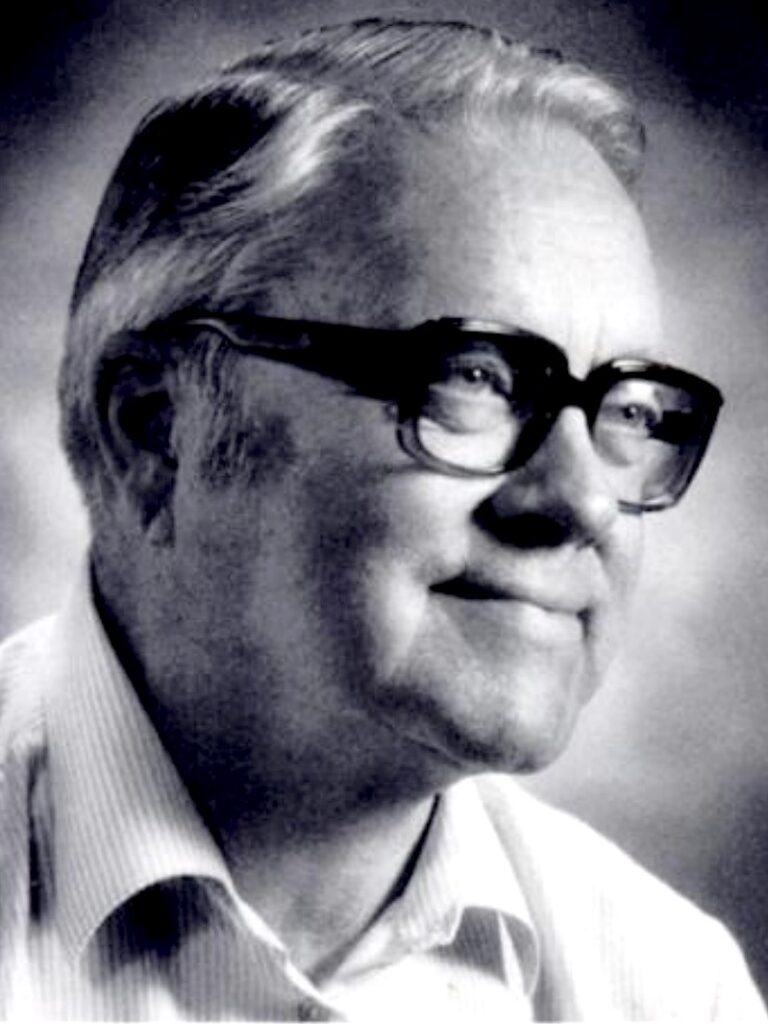Sven-Ivar Seldinger

Sven-Ivar Seldinger (1921-1998) was a Swedish Radiologist.
Best remembered for developing the Seldinger technique a technique for safe percutaneous access to vessels and hollow organs that is widely used today. Seldinger is regarded as a forefather of interventional radiology
Using the technique, Seldinger pioneered a number of procedures including percutaneous transhepatic cholangiography.
Biography
- Born on April 19, 1921 in Mora, Sweden to a family renown for making the famous Mora clocks.
- 1940-1948 studied medicine at the Karolinska Institute in Stockholm
- Karolinska hospital where he started his residence in Radiology and stayed until 1966.
- During this period he was introduced to angiography and developed the Seldinger technique as we know it today.
- After a short stint in academia and teaching in Gothenburg he returned to his home town Mora as head of the Department of Radiology
- 1984 – Honorary Doctor of the Faculty of Medicine, Uppsala University
- 1986 – Retired from medical practice.
- Died on February 21, 1998 in Dalecarlia, Sweden
Medical Eponyms
Seldinger Technique (1953)
An over-wire technique of catheter insertion to obtain safe percutaneous access to vessels and hollow organs.
Sven Ivar Seldinger published his pioneering technique for achieving percutaneous vascular access in Acta Radiologica in 1953. Seldinger introduced the use of a flexible, round-ended wire to facilitate catheter insertion, was a substantial refinement to the previously accepted practice that had been described in 1941 by Pedro L. Fariñas (1892–1951).
Originally Seldinger modified a technique devised by 1956 Nobel prize winner André Frédéric Cournand (1895-1988) who developed cardiac catheterization. Following further failed modification using a piano wire to stiffen the tube, Seldinger was left with the three essential components; a needle, a wire and polyethylene tube.
In April 1952 he was hit by a…
…sudden attack of common sense and knew what to do: needle in, guide-wire in through the needle, needle out, catheter in over the wire and finally removal of the guide wire…
Seldinger 1952

Fig. 1. The equipment. The stilette is removed and the leader
inserted through the needle (top) and the catheter (bottom).
The artery exposure technique of catheterization is time-consuming, troublesome and may present certain risks.
There is a simple method, however, of using a catheter the same size as the needle, and which has been used at Karolinska Sjukhuset since April 1952. The main principle consists in the catheter being introduced on a flexible leader through the puncture hole after withdrawal of the puncture needle
Seldinger 1953

Fig. 2. Diagram of the technique. a) The artery punctured. The needle pushed upwards. b) The leader inserted. c) The needle withdrawn and the artery compressed, d) The catheter threaded on to the leader. e) The catheter inserted into the artery. f) The leader withdrawn Seldinger 1953
Seldinger used his new technique to pioneer several new procedures including localization of parathyroid adenoma by arteriography; selective renal angiography; puncture of bile ducts for cholangiography and puncture of the liver and spleen for portal venography.
Major Publications
- Seldinger SI. Catheter replacement of the needle in percutaneous arteriography – a new technique. Acta Radiologica 1953; 39: 368-376. [Seldinger Technique]
- Bernéus B, Carlsten A, Holmgren A, Seldinger SI. Percutaneous catheterization of peripheral arteries as a method for blood sampling. Scand J Clin Lab Invest 1954; 6(3): 217-221.
- Edholm P, Seldinger SI. Percutaneous catheterization of the renal artery. Acta Radiologica 1956; 45(1): 15-20.
- Seldinger SI. Visualization of aortic and arterial occlusion by percutaneous puncture and catheterization of peripheral arteries. Angiology 1957; 8: 73-96.
- Seldinger SI. A simple method of catheterization of the spleen and liver. Acta Radiologica 1957; 48(2): 93-96.
- Seldinger SI, Arner O, Hagberg S. Percutaneous transhepatic cholangiography. Puncture of dilated and non-dilated bile ducts under roentgen television control. Surgery 1962; 52(4): 561-571.
- Seldinger SI, Sundblad R. Splenic regulation of portal flow in man. Scand J Clin Lab Invest. 1963; 15(4): 380-387.
- Seldinger SI. Insertion of catheter by cannula replacement. In: Vascular roentgenology. (Schobinger, Robert A. ed) New York: Macmillan, 1964: 33-40.
- Seldinger SI. Percutaneous transhepatic cholangiography. Acta Radiologica Suppl 1966; 253 (Thesis)
References
Biography
- Archive. Sven-Ivar Seldinger urn: sbl: 5858. Swedish biographical dictionary
- Doby T. A tribute to Sven-Ivar Seldinger. American Journal of Roentgenology. 1984; 142: 1-4.
- Sven-Ivar Seldinger: biography and bibliography. AJR Am J Roentgenol. 1984; 142: 4.
- Testimonials to Seldinger. American Journal of Roentgenology. 1984; 142: 8-11.
- Nyman U. Sven-Ivar Seldinger 1921-1998. Seldinger Sällskapet för Vaskulär och Interventionell Radiologi.
- Greitz T. Sven-Ivar Seldinger. American Journal of Neuroradiology. 1999; 20: 1180-1181
- Bibliography. Seldinger, Sven Ivar. WorldCat Identities
Eponymous terms
- Higgs ZC, Macafee DA, Braithwaite BD, Maxwell-Armstrong CA. The Seldinger technique: 50 years on. Lancet. 2005 Oct 15-21;366(9494):1407-9
Eponym
the person behind the name
Resident Medical Officer currently working in Emergency Department at Sir Charles Gairdner Hospital. Pianist and avid Golfer | LinkedIn |
